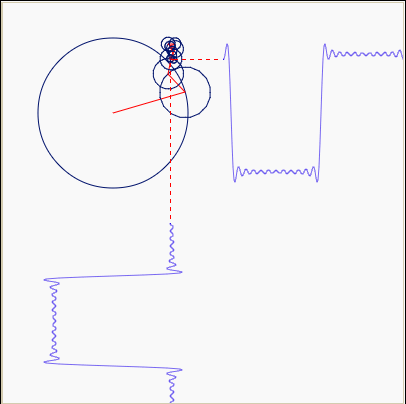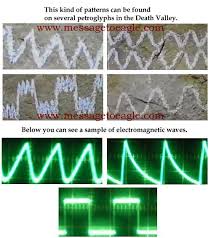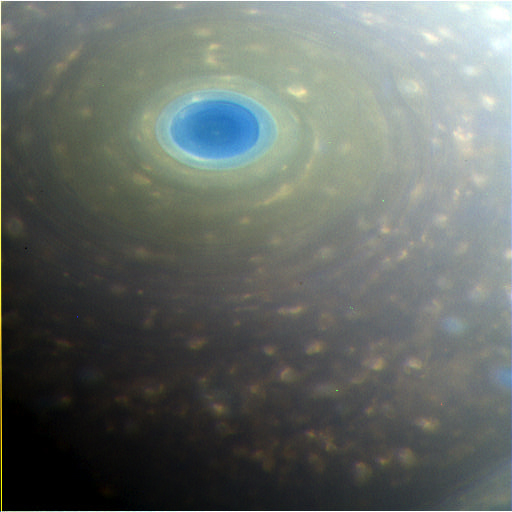It looks like you're using an Ad Blocker.
Please white-list or disable AboveTopSecret.com in your ad-blocking tool.
Thank you.
Some features of ATS will be disabled while you continue to use an ad-blocker.
share:
originally posted by: dragonridr
originally posted by: tadaman
a reply to: MuonToGluon
Just throw a hydrogen bomb "match" big enough to ignite the thing.
It'll compress and make a little sun...or hell ball that'll burn out, irradiating everything in the outer solar system.
Its kind of like a doomsday machine waiting to explode.
A cosmic Ford Pinto gas tank.
impossible there just is not enough mass to sustain fusion. and you think a hydrogen bomb would ignite it? you do realize that huge asteroids hit it all the time which causes megaton explosions on the planet. In other words if it could happen it would have all ready.
They have done that with Jupiter
and with some of the Arguments here on this thread most of is explained here !
Could Jupiter become a star?
February 21, 2014 by Fraser Cain, Universe Today
phys.org...
a reply to: SolAquarius
well tom delonge did say that the greek mythos was the one which is closest to what he has been told to be true!
Ovid's Metamorphoses is probably the best accounts of the greek myths
and apparently they are true
so kronos is looking
well tom delonge did say that the greek mythos was the one which is closest to what he has been told to be true!
Ovid's Metamorphoses is probably the best accounts of the greek myths
and apparently they are true
so kronos is looking
The blue area appears to be a depression, therefore gases at lower altitude.
The yellowed surface gases appear at higher altitude. In infra red they also appear brighter, whilst gases inside the blue vortex appear dark in infra red. Therefore they are a function of heating on the outer gases and colder sinking gases inside the blue vortex.
To me this suggests a chemistry change. What compounds are that brilliant blue colour when cold, but yellowed when warmed?
Is the warming from sunlight, convection, ionization or a combination?
The yellowed surface gases appear at higher altitude. In infra red they also appear brighter, whilst gases inside the blue vortex appear dark in infra red. Therefore they are a function of heating on the outer gases and colder sinking gases inside the blue vortex.
To me this suggests a chemistry change. What compounds are that brilliant blue colour when cold, but yellowed when warmed?
Is the warming from sunlight, convection, ionization or a combination?
originally posted by: sy.gunson
The blue area appears to be a depression, therefore gases at lower altitude.
The yellowed surface gases appear at higher altitude. In infra red they also appear brighter, whilst gases inside the blue vortex appear dark in infra red. Therefore they are a function of heating on the outer gases and colder sinking gases inside the blue vortex.
To me this suggests a chemistry change. What compounds are that brilliant blue colour when cold, but yellowed when warmed?
Is the warming from sunlight, convection, ionization or a combination?
The blue is simply Saturn's hydrogen atmosphere scattering Sun's light (same way it works with our blue sky). The yellow is due to ammonia compounds, similar as what's on Jupiter. (Jupiter's poles are also blue-ish). www.quora.com...
edit on 5-4-2017 by wildespace
because: (no reason given)
What a clunker

Refracted hf pulses collectively imitating a lower frequency. The death signal of the local dualistic solar system. Inverted image of the true sine source input spiraling into the mirrorcore

Refracted hf pulses collectively imitating a lower frequency. The death signal of the local dualistic solar system. Inverted image of the true sine source input spiraling into the mirrorcore
originally posted by: BigBangWasAnEcho
What a clunker
Refracted hf pulses collectively imitating a lower frequency. The death signal of the local dualistic solar system. Inverted image of the true sine source input spiraling into the mirrorcore
A what of what of what?
originally posted by: BigBangWasAnEcho
What a clunker
Refracted hf pulses collectively imitating a lower frequency. The death signal of the local dualistic solar system. Inverted image of the true sine source input spiraling into the mirrorcore
Can you explain what you posted please? I can see it produces a square wave, but why? What do the circles represent? I assume the big one is saturn?
It reminds me of this..

I cant find higher quality photos or more informarion (maybe im searching with the wring words)

Cassini, having made its first "dive" between Saturn and the rings this Wednesday, returned this great closeup of the northern vortex:

(In approximately true colours, because I used raw, uncalibrated images)
Phil Plait's article: www.blastr.com...

(In approximately true colours, because I used raw, uncalibrated images)
Phil Plait's article: www.blastr.com...
edit on 28-4-2017 by wildespace because:
(no reason given)
Climate Change on Saturn. Let's all chip in and buy AlG a one way ticket to go and prevent it.
Here's a great true-colour mosaic from the recent images. Wow!


new topics
-
Do we live in a simulation similar to The Matrix 1999?
ATS Skunk Works: 12 minutes ago -
BREAKING: O’Keefe Media Uncovers who is really running the White House
US Political Madness: 39 minutes ago -
Biden--My Uncle Was Eaten By Cannibals
US Political Madness: 1 hours ago -
"We're All Hamas" Heard at Columbia University Protests
Social Issues and Civil Unrest: 1 hours ago -
The good, the Bad and the Ugly!
Diseases and Pandemics: 3 hours ago -
Russian intelligence officer: explosions at defense factories in the USA and Wales may be sabotage
Weaponry: 5 hours ago -
African "Newcomers" Tell NYC They Don't Like the Free Food or Shelter They've Been Given
Social Issues and Civil Unrest: 6 hours ago -
Russia Flooding
Other Current Events: 8 hours ago -
MULTIPLE SKYMASTER MESSAGES GOING OUT
World War Three: 8 hours ago -
Two Serious Crimes Committed by President JOE BIDEN that are Easy to Impeach Him For.
US Political Madness: 9 hours ago
top topics
-
Go Woke, Go Broke--Forbes Confirms Disney Has Lost Money On Star Wars
Movies: 16 hours ago, 13 flags -
Pro Hamas protesters at Columbia claim hit with chemical spray
World War Three: 12 hours ago, 11 flags -
Elites disapearing
Political Conspiracies: 14 hours ago, 10 flags -
Biden--My Uncle Was Eaten By Cannibals
US Political Madness: 1 hours ago, 9 flags -
African "Newcomers" Tell NYC They Don't Like the Free Food or Shelter They've Been Given
Social Issues and Civil Unrest: 6 hours ago, 9 flags -
BREAKING: O’Keefe Media Uncovers who is really running the White House
US Political Madness: 39 minutes ago, 8 flags -
Freddie Mercury
Paranormal Studies: 16 hours ago, 7 flags -
Two Serious Crimes Committed by President JOE BIDEN that are Easy to Impeach Him For.
US Political Madness: 9 hours ago, 6 flags -
911 emergency lines are DOWN across multiple states
Breaking Alternative News: 9 hours ago, 6 flags -
A Personal Cigar UFO/UAP Video footage I have held onto and will release it here and now.
Aliens and UFOs: 14 hours ago, 5 flags
active topics
-
Mood Music Part VI
Music • 3054 • : underpass61 -
Russian intelligence officer: explosions at defense factories in the USA and Wales may be sabotage
Weaponry • 135 • : Kurokage -
Do we live in a simulation similar to The Matrix 1999?
ATS Skunk Works • 3 • : purplemer -
Biden--My Uncle Was Eaten By Cannibals
US Political Madness • 22 • : nugget1 -
Marjorie Taylor Greene Files Motion to Vacate Speaker Mike Johnson
US Political Madness • 58 • : WeMustCare -
911 emergency lines are DOWN across multiple states
Breaking Alternative News • 3 • : mysterioustranger -
Former NYT Reporter Attacks Scientists For Misleading Him Over COVID Lab-Leak Theory
Education and Media • 5 • : Consvoli -
"We're All Hamas" Heard at Columbia University Protests
Social Issues and Civil Unrest • 4 • : GENERAL EYES -
Post A Funny (T&C Friendly) Pic Part IV: The LOL awakens!
General Chit Chat • 7122 • : baddmove -
African "Newcomers" Tell NYC They Don't Like the Free Food or Shelter They've Been Given
Social Issues and Civil Unrest • 12 • : Lapidoth

